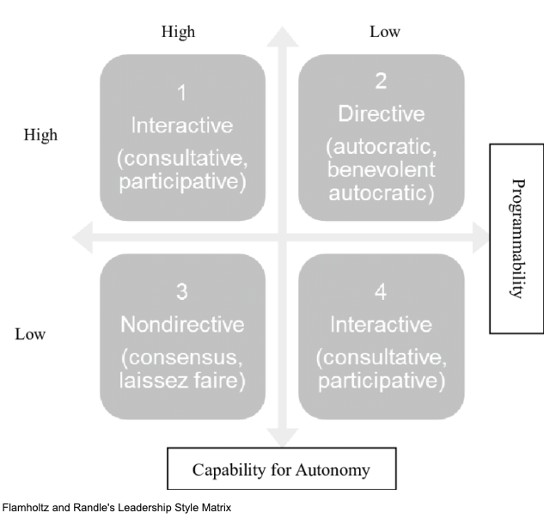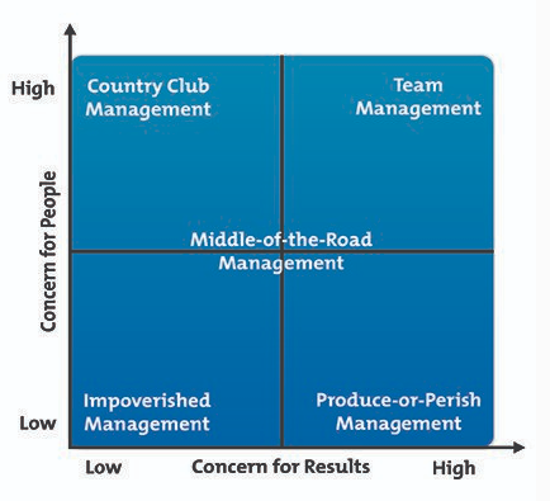Martin Luther King Jr., Abraham Lincoln, Susan B. Anthony, Franklin D. Roosevelt – what do all these people have in common? They were all great leaders, and you know their names because great leaders are memorable.
Great leaders don’t just say interesting things; they actually drive others to take action and spark change in the world. The leaders we’ve listed can be valued on a grand scale, having impacted our whole society.
However, there is plenty of need for leaders in much smaller scale scenarios, such as in industries and offices.
But how does a leader go from being someone who simply tells others to do tasks, to a prominent figure who people respect and feel motivated by?
Simple – by cultivating a leadership style.
What Is a Leadership Style?
Your leadership style is the manner in which you motivate people on your team, how you provide direction and communicate, and how you implement plans. It defines what kind of leader you’re going to be and how your people will come to view you.
There are plenty of different leadership styles and frameworks that have been defined and adopted over time. Some have failed, while others have been wildly successful.
Let’s take a closer look at those who have made an impact.
The Best Leadership Styles (+ Examples)
There are several different frameworks of leadership that have been defined over the last several decades.
Let’s review them:
Kurt Lewin: 3 Major Styles
Back in the 1930s, psychologist Kurt Lewin developed a framework of what he believed to be the three primary leadership styles. Since Lewin’s work, many styles have evolved from these three core pillars.
But before we dive into those, let’s take a look at the base levels:
Autocratic Leadership
Autocratic leaders make decisions alone without first weighing the opinions of their team. This style tends to be pretty strict, as employees are expected to simply follow the rules and decisions set by leadership.
While an autocratic leadership style can be effective in environments in which quick decisions are needed, it can easily create problems in a more team-centric collaborative work environment.
Example: Autocratic leadership is often essential in medical fields, in which experienced experts are working with novice medical professionals in training.
Democratic Leadership
Democratic leaders carefully consider the input of team members before making a decision. This is often a great leadership style to adopt in an office environment because employees feel their opinions are valued and their happiness matters to their leader.
However, in environments in which decisions have to be made within an instant, democratic leadership is not the best option, as it can slow down the decision making process.
Example: A service team leader is trying to implement a new service strategy to boost ratings for his company. He knows that his team works closely with his customers, so before he implements a new strategy, he consults them on what they believe to be the primary issues with their current methods, asking questions like, “Have you noticed a pattern in customer complaints at all?”
Laissez-Faire Leadership
Laissez-faire leaders provide the most freedom out of the three primary styles. They allow employees a long leash when it comes to how work is done and the deadlines that are followed. With this style, leaders will offer support and resources when needed, but they’re otherwise uninvolved.
This leadership style can result in very high team satisfaction, but it’s only effective when there’s a strong base of trust between the leader and their team, and each and every employee is responsible and motivated with their work.
If you’re not careful, a laissez-faire leadership style can easily slip into unproductive chaos, in which team members take advantage of your lax demeanor.
Example: Young, hip start-up companies often take a laissez-faire leadership approach, allowing their employees free reign to do and work as they please. While this does sometimes have a positive impact on the team and can make for a great company culture and work environment, it can also have disastrous effects.
Five Emotional Leadership Styles
These particular approaches have been dubbed “emotional leadership styles” by several authors in the book Primal Leadership, as their use can impact the emotions of our team members.
Visionary
Visionary leaders have their sights set on a big picture, and they help guide their team toward great change. Visionary leaders are often inspiring to large (or small) groups of people and can organize groups to take action.
Example: MLK was a visionary leader who inspired thousands and sparked great change throughout our society. However, you can still be a visionary leader if you’re working on a much smaller scale, such as trying to turn a sinking company around.
Coaching
Coaching leaders are particularly skilled at being able to identify the strengths and weaknesses of their individual team members, as well as how to work with each of them for improvement.
They’re focused on helping their team members grow by setting goals and challenging them to reach them.
Example: Coaching leadership is another great style for managing service and sales professionals, as they are highly coachable in the skills necessary for meeting goals.
For example, if a salesperson is not meeting their quota, a manager might asses the unique strengths and weaknesses of that person, where they might be floundering in their pitch and ability to close the sale. They would then coach them on tactics to help them hone their closing technique so they can meet their sales goals.
Affiliative
Affiliative leaders encourage harmony throughout their team for a seamless, streamlined workflow. They want team members to bond, and promote positivity throughout the environment.
However, this method can make it difficult to discipline and enforce management throughout your team as a leader because it tends to create a more relaxed, informal connection between you and your employees.
Example: Affiliative leadership is often used in sports situations and community based projects in which a team is assembled to complete something.
Pacesetting
This one is fairly obvious – pacesetting leaders set a pace, and they expect their team to keep up. This style is often associated with setting high standards and holding your team members accountable.
While this is an effective method for managing a fully trained, capable team, it’s not great for working with novices who still need training and mentoring to help them grow.
Example: Pacesetting may be a common leadership style in manufacturing environments, in which employees are expected to stay in pace with the rest of the workflow every day or risk setting everyone – and ultimately productivity – back.
Commanding
This one is pretty self explanatory. Commanding leaders have a take-charge attitude and may have the reputation of being bossy and controlling.
They often don’t take team opinions into consideration and make authoritative decisions that are sometimes not agreed with.
Nevertheless, these leaders are often motivated to achieve a specific goal, and it can be effective for teams that work well under a strong hand. Creative teams, however, will likely suffer under commanding leadership.
Example: The most obvious examples of commanding leadership styles can be found in military environments. However, you don’t have to enlist to cross paths with a commanding leader.
Flamholtz and Randle's Leadership Style Matrix
A fairly new development within leadership studies, Flamholtz and Randle’s Leadership Style Matrix was published in 2007.
The matrix is divided into four quadrants that defines two different ends of leadership styles – autocratic/benevolent autocratic, and consensus/laissez-faire.
The matrix determines these factors based on two elements: programmability of tasks and a team’s ability to work autonomously.

Source: ResearchGate
The Blake-Mouton Managerial Grid
The Black-Mouton Managerial Grid was published back in 1964 and advises you on the best leadership style with consideration of how you prioritize your team and how you prioritize tasks.
The grid displays five leadership styles on a grid defined by the two main elements, concern for people and concern for productivity.
Ideally, you should aim to have a high concern for both people and productivity rather than having one fall by the wayside while the other is prioritized.

Source: Mindtools
Path-Goal Theory
Path-Goal Theory was published just after the Blake-Mouton Managerial Grid in 1971. It emphasizes the need for different leadership styles based on the needs of individual team members, their tasks, and their work environment.
For example, a more experienced professional may not need as much guidance and management as a novice who has just entered the industry.
What Your Leadership Style Says About You
Your style is informed by your unique leadership skills. There are plenty of leadership skills you can exhibit, and among the most important are listening, communication, and problem solving.
But it can also include skills like the ability to plan and manage projects and teams, and more conceptual elements, like the ability to focus on the bigger picture.
Your style basically shows how you put your skills into action but can also reflect your experience and general personality.
By mixing these three ingredients – skills, experience, and personality – you’ll likely have a good idea of the kind of leadership style you’re headed toward. Just make sure that your style is more influenced by your strengths than your flaws.
Your leadership style will largely determine how you’re perceived by your team, and you should take that into consideration when you’re deciding what kind of leader you want to be.
Do you want them to see you as strict but fair? Open and communicative?
One of the primary reasons it’s so important is because it impacts how your team responds to you and how your team and peers alike work with you.
If you harbor the kind of leadership style that instills fear in your team, they likely won’t feel that they can come to you with comments and complaints, which can cause a lot of problems within workflow.
Finding Your Own Leadership Style
A major part of defining your own style is understanding what you’re naturally good at and being authentic in how you lead your team.
You won’t be able to develop an effective leadership style overnight – it’s going to take time, effort, exploration, and some real soul searching.
Follow these steps:
Find Your Personal Strengths.
First and foremost, you need to dig deep and figure out what your personal strengths are, as these will form the core foundation of your style.
Are you a good listener? A fast decision maker? A careful considerer or all potential angles of a situation? These will help shape how you lead your team.
Research Leadership Styles.
Once you’ve determined what your strengths are, carefully research leadership styles that might match well with them *cough cough see above.*
The goal here is to identify a style that will fit your strengths, your personality, and your ethics, so you can seamlessly combine all of them to develop a well rounded style.
It’s also important to identify your weaknesses and consider styles that will help you manage them so they don’t become a burden throughout your efforts.
Test Out Multiple Styles.
It’s important to consider that the leadership style that closely matches your strengths may not be the best option for managing your team.
Additionally, a singular style won’t work in all scenarios, so it’s sometimes best to merge a few different styles to create the unique approach necessary for success.
For example, you need to be able to identify when a new employee is struggling and could use some additional training, versus when a team member is simply slacking and requires a heavier hand and more forceful management to motivate them.
Both are scenarios that a single team leader will need to carefully navigate to ensure that they can help each and every employee be successful.
Try Taking Quizzes.
Another way to find your leadership style is by taking quizzes which will assess your strengths and weaknesses, and how you make decisions.
This can actually be a fun method to try out (No? Is that just me? Am I the only one who enjoys quizzes? Surely not.)
Here’s a few online quizzes that you can take to identify your default leadership style:
- MindTools Leadership Style Quiz
- LifeHacker Leadership Style Flowchart
- University of Southern California Leadership Style Quiz
- Idealistcareers Leadership Style Quiz
- Verywell Mind Leadership Style Quiz
Lead Your Team Toward Success, Not Failure
If you don’t define your leadership style, you risk being inconsistent and ineffective. It’s just as easy to lead your team toward chaos and mayhem as it is to lead them to success.
In fact, it’s even easier. But if you identify your strengths and set a foundation for your leadership style, you’ll be able to inspire your team and drive big results for your company.
Remember, you have to be the leader your team deserves and the leader your team needs. Otherwise, your company (and Gotham City) will descend into chaos.


Claire Cortese
I am a content creator here at Bluleadz. In my free time, I enjoy hugging dogs, watching reruns of The Office, and getting sunburnt at the beach.